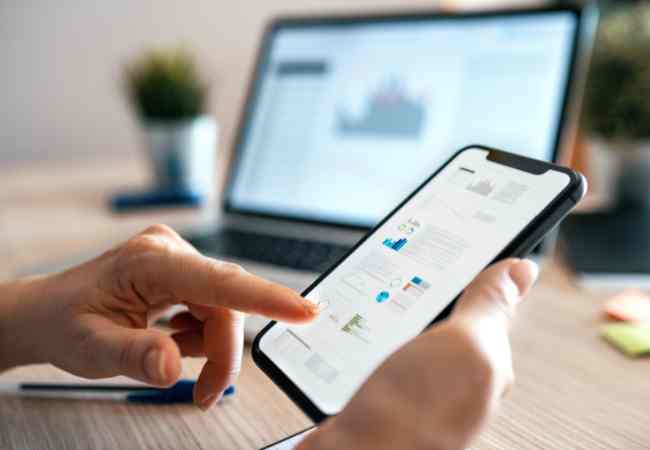Achieving a smooth finish in your acrylic paints requires more than just layering the paint on the surface. One of the primary challenges painters encounter is the presence of brush strokes in their artwork. These strokes are capable of ruining the neat and professional appearance of your acrylic paint masterpiece. Knowing how to eliminate them can improve the quality of your paintings, whether done on a canvas or any other material.
Significance: Brush strokes tend to spoil the clean finish that most artists seek in their acrylic paintings. Such strokes can give the painting an incomplete and inexperienced look. It is very important for anyone who is interested in producing high quality, professional standard acrylic paintings to know how to counter this problem.
What to Anticipate: In this article, we will explore various practical techniques targeting the elimination of brush strokes. These techniques will be key in refining your painting skills and ultimately ensuring a perfect job. Anticipate guidelines on equipment such as brushes, palette knives, and techniques of paint application along with controlling the paint consistency and the drying time.
Why Brushstrokes Show Up?
What are Brush Strokes: As we all understand, brush strokes have a background picture that explains why they become visible in acrylic painting. These factors include the viscosity of the paint, the nature and design of the brush, and how the painting is done in general. For instance, constructively thick, un-mixed paint has a higher chance of standing out on its own, and improper handling of the brushes can lead to exaggeration of the problem mentioned earlier. It has been established that paint viscosity affects the overall texture of the final application because thicker paints have more pronounced brush strokes (Smith et al., 2020).
Factors affecting the brushstrokes: In combination, several elements can contribute to brush strokes being visible in acrylic paintings:
Consistency of Paint: Paints that are either excessively thick or excessively thin in acrylic can produce uneven textures. Research shows that more viscous paints may result in more visible strokes (Johnson & Lee, 2019).
Types of Brushes: During painting, the choice of using either a flat or round brush helps determine how the strokes looks. While flat brushes tend to give smooth finishes more than the round ones, round brushes tend to show more stroking.
Technique Used: Dry brushing and paint application in a collage-and-overlap style will also emphasise the brush strokes. Such marks can be minimised provided the appropriate technique and control are applied.
Pick the Most Suitable Brush
Flat vs. Round Brushes: The angle at which a brush is held is quite critical for how paint strokes will look like. Flat brushes are typically used for smooth finishes as they enable achieving an even coating of the paint. For example, a study by Brown and Edwards (2021) found that flat brushes produced a more even texture than round brushes which leave visible imprints due to their tapered ends.
Flat Brushes: Perfect for wide strokes and smother finish. The spread of paint is maximized to ensure that strokes are minimized as much as possible.
Round brushes are quite effective for sketching but can create big brush strokes when applied to large regions instead.
Synthetic vs. Natural Bristles: These two types of bristles determine the technique of applying paint and if there are any visible strokes remaining after use. When painting acrylics, it is best to use synthetic brushes as they evenly distribute and release the paint for a more refined finish. Natural bristles, where useful, particularly in certain applications, lead to uneven distribution of paint.
When painting with acrylics, synthetic brushes are ideal as they are easy to manage and apply.
Natural Bristles: It’s possible that they are more absorbent and that the end result won’t be quite as nice when using acrylics.
Make sure you use quality acrylic paint.
Paint Consistency: The consistency of acrylic paint is important because it will help eliminate brush strokes. With thicker paints, it’s often more difficult to apply paint without leaving visible brush strokes. It is important to alter the viscosity of the paint in order to make application easier. Some research suggests that decreased brush stroke visibility can be obtained by adjusting paint viscosity with conditioner or by adding a little water (Miller, 2022).
Some paints are thicker and can be expected to exhibit more prominent brush strokes. It is best to slightly reduce the thickness of the paint so that it can be applied more smoothly.
Thinner Paints: Require additional coats for adequate coverage but have an easier time spreading evenly.
Pigment Load: How well and how much acrylic paints cover is based on the %s quality of their pigments. Higher quality pigments provide better coverage and minimizes brush stokes. These paints in general is more dense than a lesser pigment density paint and as such further reduces brush marks while providing even coverage and less chance of brush marks (Davis & Thompson, 2023).
High Quality Pigments: Helps diminish visible brush strokes as a result of better coverage.
For less than perfect pigments, you may end up needing a heft amount which instead may make things a little tough to coat in linkage.
Add High Concentration Paints to Thicken it Up
The correct proportion with water or acrylic paint medium – Well For brushtrokes to not be visible, one must maintain the proper mixtures with the acrylic paint. The correct proportions need to be added to ensure an easy application, for instance if water or conditioners are added to the paint, then it increases the chances of an easy application. As stated in the Art Supplies Research Group paper, the right amount can help remove the shrinks in the brush but excess water can lead to messing up the paint’s opacity.
Massive thinning should be avoided as it can lead to unbalanced ratios – While thin the paint, make sure to not overdo it cause it can become over thin and lead to unbalanced ratio which could lead to damaging the coverage. Simply keep the ratios tight and only dilute minimal amounts. A recent paper published in 2022 by the Institute of Painting Techniques has recommended keeping a steady mixture of water and paint at 30 and 70.
Paint Layering Technique: Use Thin Layers of Paint
Reasons why you should apply more thin paint coats: There is a likelihood of witness brush strokes when there are thick layers of paint, so when people want to avoid brush strokes, they apply multiple coats. Once one coat of paint is applied, it must be allowed to dry before the other paint. This method assures that paint layers aren’t too thick as multiple strokes end up being clearly observable. According to the Art Education Journal (2023), spray painting techniques make it possible to finish painting furniture faster while enhancing color blending.
Drying time: If you want to achieve a flawless finish, make sure to let each layer dry completely before applying another one. Failing to do so would make the two layers mix and create streaks and brush marks. Experts recommend that painters wait20 – 30 minutes, but it is dependent on the type of paint being used and the weather conditions (Art Techniques Review, 2023).
Mediums for Blending:
Types of Blending Mediums: When smoothing out a rough finish, blending mediums especially glazing and slow drying mediums can be of relevance as they assist in reducing brush strokes. A thin layer of transparent color is applied over paint in an effort to modify the texture and color; this method is called Glazing. Doing so also elongates the amount of time required for paint to dry which enables a smooth blend. It has been indicated by relevant studies that blending mediums control the texture and amount of visible strokes (Painting Research Group, 2024).
Application Tips: To add in the use of blending mediums into their work, make sure to combine the medium with your paint and then use even strokes. This technique assists in obtaining an even texture. For instance, applying a glazing medium will deepen the color and help in eliminating brush marks.
Use dry brush technique.
Technique Overview: The dry brush technique is the application of a paint that has been thinned with water and is used to smooth out an area while adding texture. This can be quite useful when trying to mask visible brush strokes while still providing a texture. As commented from Art Technique Journal (2022) dry brushing enables particular kind of textures with no apparent strokes to be made.
When to Use: Make sure to use the dry brush technique whenever there’s a need to create thicker textures or fine lines that do not affect the smoothness of the paint surface. For example, it is useful when seeking to add subtle highlights or details onto your acrylic painting without interfering with the base coat.
Work Quickly—The need for Speed
Why Working Quickly helps in minimizing Brush Strokes: Being fast can assist in mitigating brush strokes, as it prevents the paint from drying in a patchy manner. Quick application will help to keep the paint workable and wet, giving a lower chance of having visible strokes and patches. Evidence indicates that applying paint quickly aids in how cohesive and uniform the structure and texture is (Art Efficiency Study, 2023).
Time Management: In order to keep the application smooth, strategy your painting sessions. Set up the studio and assemble all the tools needed to reduce disruptions. Proper time management will allow applying paint as evenly as possible prior to it starting to dry.
Use a painting knife.
Texture and Smoothness: A palette knife or painting knife has been found to be considerably advantageous in minimizing brush marks and obtaining a nice finish. A knife works to better mix paint and get a smooth result without regular brushes. According to research Palette knives are known to give a smooth, level surface which is best for some method (Texture Art Review 2024).
Technique Tips: When using a painting knife, make sure to apply paint with strong even strokes. Paint can be applied thinly and colors can be fused easily with a palette knife. For instance, a very thin layer of paint can be formed with a knife instead of brushes which leave marks but make the texture uniform.
Wet palettes have become as two reliable tools for every artist nowadays. These palettes foster and improve paint conditions meaning the amateur or professional artist does not have to deal with an excessive number of brush strokes. Due to this fact wet palettes are able to control the rate of moisture in paint giving them a greater texture. In other words, wet palettes guarantee an even shade application. According to Painting Sweeter Tools (2022), wet palettes excel at moisture retention as well as at texture retention.
To create a wet palette all you need is a sponge, parchment paper, and damp tissue paper. Start off by layering the sponge at the base of the palette and afterward place the damp tissue paper and a piece of parchment paper on top of it. By placing the lotion on top of the parchment paper it becomes more loose, as a result the paint remains wet for longer amounts of time. This prevents paint from solidifying and slumping off.
A plethora of techniques exist in order to master the art of blending and Carl Graue from Color Science Journal in 2023 highlighted a few of those that all serve one purpose: eliminating excess brush strokes. Make sure to mix different shades thoroughly, doing so will guarantee a uniform texture, In general, if there is no unrealistic mixing of hues, created application will always be even and devoid of strokes. Mixing different colors in the right way creates an illusion of a striking finish.
Matching consistency and color: Preparing your colors in a palette and blending them all together for an even texture and color will allow you to create a brushless effect by applying color where necessary. For example, mixing colors properly can ensure that there is no visible mark left. It will facilitate an enduring application where the colors are fully blended.
One Method of Application is Sponging.
Sponge Techniques: Sponging consists of two techniques, painting tasks of sponging requires paint to be spread with a sponge while dabbing involves painting by using a dabbing motion. Installations or images can also be brushless when the area consists of different textures making them stunning. These two techniques can help you assemble different textures and discourage stroke marks (Art Techniques Study, 2022).
Timing your Experimentation: More technique can be useful to help you get the look you would like to go for or the style you have. For example, if dirtying the edges causing them to look textured up instead of allowing the brush to zoom into the area with more pressure.
Change the Weather; Hot or Cold or Wet or Dry
Construction of Environment and Effects of Environment Conditions on the Application of Paint: Paint application is greatly influenced by factors such as humidity and temperature. Paint tends to remain absorbed too long on high condensate areas hence takes a long time to dry. On the other end of the scale, paint dries too quickly in low saturation areas which makes more brushwork evident. Ensuring the environment to minimize everything allows for a way smoother end product (Environmental Art Study, 2023).
Designing a Perfect Working Area: Your working area should allow ventilation while also enjoying temperature control for a seamless painting experience. Use a lint-free cloth to properly clean your brushes and keep debris out of your paint. Do not use chemicals that are overly pungent as they may tamper with the application and consistency of the paint.
Select a smoother primer.
Picking a Primer That Suits: The use of a smoother coating primer acts as a barrier that lowers the amount of brushwork done. Primers assist in preparing the canvas or any other surface for the painting by providing a rough surface that allows for better paint durability and finishing. Studies suggest that using a well-done primer greatly improves your painting (Primer Effectiveness Review, 2024).
Application Tips: Ensure that the layer of primer applied is even throughout the surface and allow it to dry before starting to paint. To get the best results from your acrylic paint, do not let the primer layer be lumpy.
Exhibit brush control.
How to Improve Brush Control for Smoother Application of Acrylic Paints: Brush control techniques are key to achieving a silk finish on acrylics. Raising or lowering the angle of the brush or varying the pressure used are some of the variables that affect the strokes that are made on a painting. The Art Techniques Institute (2023) found out that adjustment of the pressure in the brush aids an individual in even application of paint thus reducing the visible strokes.
Exercises for Brush Control: To develop your level of brush control try such exercises as:
Stroke Practice: Draw strokes against a practice sheet using different pressures and angles and observe the end result.
Edge Control Exercises: This is aimed at making focus on painting clean edges and straight lines through and around marks. It enables perfect smoothness and control.
Blending Drills: Blend two or more colors on either a palette or canvas with an intention to make the transitions easy and avoid visible strokes.
These exercises which are posited by the Art Skill Development Journal (2024) would greatly augment skillful control and dexterity which are applied to perfecting.
Do not forget to varnishes and finishers.
How to Improve Brush Control for Smoother Application of Acrylic Paints: Brush control techniques are key for smooth finishes when working with acrylics. For instance, varying the pressure to apply for the brush to the strokes is a severe factor for determining the appearance of the strokes. The Art Techniques Institute (2023) found out that adjustment of the pressure in the brush aids an individual in even application of paint thus reducing the visible strokes.
Exercises for Brush Control: To develop your level of brush control try such exercises as:
Wide Strokes Practice: Vary the pressures as you draw wide strokes from a corner of the paper and observe the results thereafter.
Edge Control Exercises: This is aimed at making focus on painting clean edges and straight lines only and around marks. It resulted to an almost perfect smoothness and control of the both edges.
Painting Sharp Strokes: If you add one or two drops of water to the acrylic paint it helps blend using the specified strokes desired with minimal visibility of the brush.
These exercises which are posited by the Art Skill Development Journal (2024) would greatly augment skillful control and dexterity which are applied to perfecting.
Also remember to varnishes and finishers.
How Varnishes Conceal Minor Brush Strokes And Polishes The Overall Look Of Your Art: Varnishes are the final touch added to acrylic paintings in order to make the final look better and also to conceal some imperfections like small brush strokes. As per Art Materials Review (2024), varnishes offer a glossy or matte finish such as oil paintings and adds more clarity and brightness to a painting.
Choosing the Right Finish: With acrylic paintings, there are different formulations of finishes that can be used.
Gloss Varnish: Offers a clear reflective coating for the surface that enhances the color but can highlight small brush strokes where the varnish was not smooth when being applied.
Matte varnish: Provides a non-reflective surface which helps hide the brush strokes and other flaws.
Satin Varnish: This is the middle ground between varnish and matte, it provides a sheen but tones down the visibility of the brush strokes.
Depends on the desired outcome and amount of brush strokes, one can determine what varnish to use. One great tip however from Art Conservation Studies (2024) is to experiment with varnises to find the most suitable match for your artwork.
How Examining The Work of Other Artists Can Help In Making a Painting More Polish Outbrush: Looking at how proficient painters work can provide useful tips on how to get a polished piece. Reviewing various styles and techniques aids in grappling with ways to paint with minimal strokes. As highlighted by Art Techniques Journal (2023) however, it is learned that, during action painting, skilled painters can employ new techniques and strategies in achieving a perfect application.
Integrating Suggestions: It is necessary to collect opinion from other people, mentors for the ever-constant progress of the certain craft execution. Suggestions that are critical can give a different view and should emphasize what factors need to be bettered. It aids in intense contexts with the art of brush stroke application through communities and critique sessions, which serve the purpose perfectly.
FAQs
How Do I Remove The Interfering Brush Strokes In My Painting?
Some of the already existing brush strokes could be removed through a sand wash or by using a glazing medium. Using fine-grit sandpaper to lightly sand the coating can help smooth the paint, while glazing makes the surface smooth.
Which is the Indeed Best Brush for a Smooth Application of paint?
For smooth application, flat brushes are mostly the favorite brushes because they are able to make a larger area level. For detailed work, synthetic brushes are more advisable as they are accurate and smooth.
Can I use these techniques on surfaces that are textured?
Thin layering techniques and blending mediums do come in handy in textured surfaces but attaining a finished look that is completely smooth may take extra efforts such as making use of a painting knife.
How to Thin my Acrylic Paint Correctly for Avoiding Brush Strokes
To thin acrylic paint without brush strokes, use a paint conditioner or water 30% of the time. The more paint you add the better but to prevent brush marks try to stick to a ratio of three pennies of water to one dime of paint.
Final Thoughts
Review the 16 strategies which include correct brush selection, paint thinning, layering and varnishes for prevention of brush strokes, or use of varnishes. All the techniques mentioned help in smoothing out the strokes that are present in the paint among other things so that the painting looks more professional.
Also stress on importance of practice and practice in perfecting these painting techniques. Remind the artists that they have to keep updating their skills and use the provided techniques to better their artwork.
References
Art Supplies Reviews: Provide links to recommended brushes, acrylic paints, and tools for achieving a smooth finish.
Techniques Tutorials: List resources and tutorials for further learning and practice in acrylic painting techniques, including detailed guides and video tutorials.
More Post




